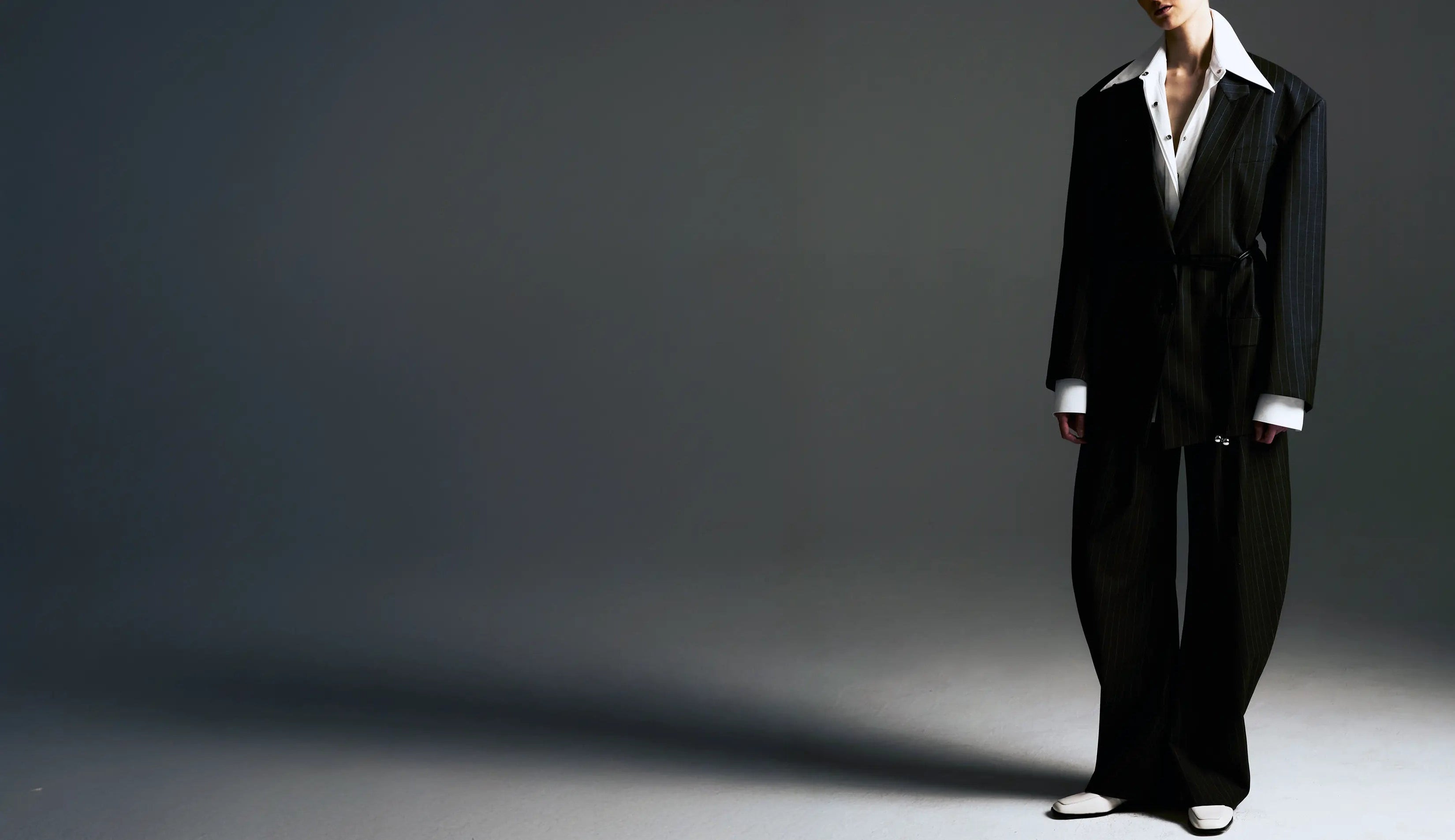Period Precision Transforms Contemporary Construction
The conventional costume industry approaches historical accuracy like record labels approached vinyl reissues in the 1990s—recognizing cultural value while missing the technical sophistication that defines authentic period recreation through construction mastery. Meanwhile, clients who navigated the transition from Hollywood's costume department shortcuts to artisanal historical recreation recognize when C-Drama precision enhances rather than replaces individual expression development through cultural appreciation.
C-Drama costume construction demonstrates the kind of technical mastery that distinguished R.E.M.'s Automatic for the People from both alternative rock pretensions and mainstream radio fodder—concentrated historical expertise creating visual storytelling through structural innovation rather than surface decoration. Contemporary tailoring using Chinese period principles requires understanding how Eastern historical philosophy translates to individual body configuration, creating personal expression that serves cultural appreciation rather than theatrical performance.
The construction process for historically-influenced formal wear requires cultural intelligence—recognizing how period techniques translate through contemporary precision rather than costume imitation. Pattern development, structural integrity, and historical context work together to create garment architecture that demonstrates sophisticated understanding while maintaining the authenticity that defines effective period-to-contemporary translation.
Technical Innovation Through Historical Integration
Hand-finished construction incorporating C-Drama historical influences creates structural sophistication that algorithm-driven period recreation cannot replicate—the same way independent film production captured narrative dynamics that studio costume departments missed. Pattern modifications benefit from understanding how traditional techniques translate to contemporary garment architecture, while maintaining individual fit requirements and lifestyle functionality.
Contemporary tailoring techniques demonstrate how historical influence enhances rather than constrains technical possibilities. Eastern period construction philosophy serves individual excellence rather than determining it, enabling garment choices that respond to personal objectives while acknowledging broader cultural movements toward authentic cross-cultural craftsmanship exchange.
The integration of Chinese historical tailoring requires the same aesthetic sophistication that recognized when Crouching Tiger, Hidden Dragon transcended martial arts categories in 2000. Each construction choice becomes an exercise in cultural intelligence, understanding that historical inspiration serves individual expression rather than imposing external period standards.
Industry Evolution Through Cultural Recognition
The shift toward C-Drama-influenced historical tailoring reflects broader costume changes that mirror the transition from Hollywood's generic period looks to culturally-specific recreation—cultural evolution that recognized when authentic historical research delivers more visual impact than traditional costume authority. Professionals who understand the difference between manufactured period spectacle and organic cultural development apply historical intelligence to tailoring choices that honor both individual expression and broader movements toward sophisticated period engagement.
Traditional costume construction operated through predictable Hollywood formulas—generic "medieval" looks, simplified "Asian" designs, shortened production timelines that communicated period through established visual vocabulary. Contemporary C-Drama influence acknowledges that historical sophistication often emerges through research precision, creating garment construction that celebrates authentic cultural exchange rather than manufactured period cycles.
The reset button appears because each generation rediscovers that quality construction serves individual aesthetic advancement—whether discussing Merchant Ivory's period accuracy or contemporary streaming-native historical development. Authentic personal expression emerges from understanding these connections rather than treating historical influence as construction compromise.
NYC Costume Culture Embraces Historical Innovation
From Brooklyn's converted warehouse costume shops to Manhattan's theatrical district ateliers, contemporary period construction needs to function across cultural contexts that traditional Hollywood costume departments never anticipated. The same neighborhoods that developed off-Broadway theatre through historical experimentation recognize when global period culture enhances rather than replaces local costume authority.
Local costume communities demonstrate how historical expertise can honor both cultural inspiration and individual craftsmanship development—construction methods that acknowledge global period evolution while respecting traditional principles that transcend cultural boundaries. The Garment District's evolution from Broadway costume suppliers to contemporary period specialists provides geographic context for understanding how international historical culture translates into tangible construction innovation.
Design sessions incorporating C-Drama historical aesthetic influences function like film pre-production meetings—collaborative, culturally aware, focused on bringing out construction qualities that traditional costume departments cannot capture. Historical inspiration serves overall aesthetic vision rather than limiting it, enabling garment architecture that responds to individual preferences while acknowledging broader cultural movements toward authentic global period exchange.
Process Clarity Through Historical Translation
C-Drama costume development reveals construction needs that conventional period recreation often overlooks—structural coherence across historical contexts, functionality that serves individual performance requirements, period sophistication that maintains authenticity during cultural translation. These standards translate into garment architecture that achieves historical accuracy unavailable through traditional costume authority.
The pattern process accounts for how historical aesthetics interact with individual body configuration and movement demands—cultural intelligence that respects both period preferences and practical requirements. Construction experimentation confirms that historical inspiration translates accurately to contemporary tailoring, while allowing for modifications that pure period imitation cannot provide.
Period design enables incorporation of Chinese historical elements without compromising the individual fit and structural functionality that define authentic construction development—cultural appreciation that serves aesthetic advancement rather than constraining creative possibilities.
Cultural Intelligence Through Historical Literacy
C-Drama-influenced historical construction requires the same aesthetic sophistication that distinguished The Last Samurai's production design from generic period blockbusters—understanding that historical culture enhances rather than dominates individual tailoring vision. Clients who recognize the difference between authentic cultural appreciation and surface-level period adoption apply historical intelligence to construction choices that honor both cultural innovation and personal aesthetic development.
The integration of Chinese historical culture with individual tailoring preferences creates possibilities that neither approach achieves independently—cultural richness that serves personal expression, historical literacy that enhances rather than constrains construction choices. Aesthetic development reveals itself through details that pure period following cannot replicate, while benefiting from cultural awareness that traditional costume isolation cannot provide.
The Accuracy Revolution: Research as Construction Authority
Contemporary fashion consumers understand that historical advancement emerges through research documentation rather than costume mandate—construction choices that maintain individual authenticity while engaging with broader cultural movements that traditional period recreation alone cannot capture. C-Drama historical innovation demonstrates how cultural exchange functions when authentic period appreciation rather than manufactured costume authority drives aesthetic development.
The construction process acknowledges cultural sophistication through research quality rather than costume metrics—tailoring choices that serve individual aesthetic objectives while contributing to broader historical conversation, development that maintains personal authenticity during cross-cultural period appreciation, craftsmanship engagement that supports authentic exchange rather than superficial costume conformity.
Cultural exchange serves functional as well as aesthetic purposes—construction approaches that accommodate individual lifestyle demands, historical choices that translate across cultural contexts, period preferences that honor both traditional inspiration and personal requirements while maintaining the authenticity that defines sophisticated cultural appreciation.
Construction Quality Through Historical Synthesis
Hand-finished tailoring incorporating C-Drama historical influences demonstrates cultural intelligence that separates authentic appreciation from costume decoration—the same way quality period film production captured historical subtleties that generic costume programming missed. Traditional Chinese construction techniques inform contemporary historical choices while maintaining the authenticity that sophisticated cultural exchange demands.
Construction curation processes benefit from understanding how historical innovation functions within broader aesthetic development—cultural knowledge that bridges period preferences with structural requirements. The integration serves individual tailoring advancement rather than imposing cultural constraints, creating construction choices that honor historical innovation while serving contemporary lifestyle demands.
Quality construction development emerges from understanding how cultural appreciation enhances rather than complicates individual aesthetic advancement—synthesis that creates tailoring possibilities unavailable through purely traditional approaches while maintaining the authenticity standards that define sophisticated cultural engagement.
The Period Atelier: History as Construction Laboratory
Story of Yanxi Palace's costume construction demonstrates how C-Drama historical principles create tailoring environments that transcend entertainment boundaries. Their research approach showcases technical documentation that serves cultural vision—traditional Chinese elements integrated through contemporary precision while maintaining the historical functionality required for authentic period recreation.
Chinese period drama costume departments reveal how historical curation functions when cultural authenticity rather than entertainment shortcuts drive construction experiences. Technical modifications accommodate both traditional aesthetic references and contemporary production requirements—construction techniques that honor Eastern historical principles while serving international entertainment standards.
The conversation continues because cultural exchange operates through the same principles that define construction sophistication—recognition that international historical culture can enhance individual tailoring development rather than constraining it. Contemporary fashion embraces C-Drama historical influence through understanding these connections rather than treating period inspiration as construction compromise.
Chinese historical influence on tailoring development represents evolution rather than replacement—cultural appreciation that enhances fundamental principles of construction advancement while expanding possibilities for authentic aesthetic development. The historical innovation serves the same cultural intelligence that distinguished quality period movements across creative disciplines, creating construction advancement that celebrates global exchange rather than maintaining artificial historical boundaries.
The reset button appears because each generation rediscovers that construction sophistication emerges through authentic cultural engagement—whether discussing Akira Kurosawa's costume precision or contemporary period-native construction development. Quality tailoring respects both individual aesthetic preferences and cultural appreciation, creating construction advancement that functions across cultural contexts while maintaining the authenticity that sophisticated cultural exchange demands.
C-Drama historical influence demonstrates how traditional period culture can enhance individual construction development rather than limiting it—global historical awareness serving personal expression while honoring the cultural intelligence that transcends period boundaries. The future of contemporary tailoring lies in understanding these connections rather than maintaining the costume limitations that no longer serve contemporary aesthetic sophistication.




